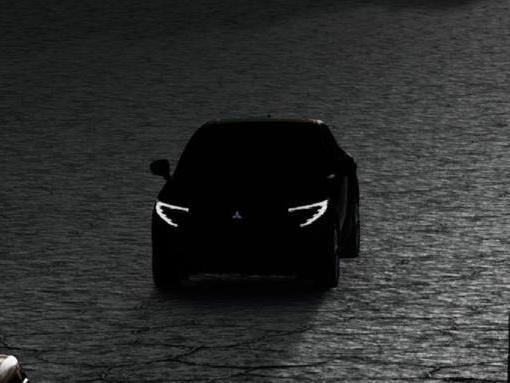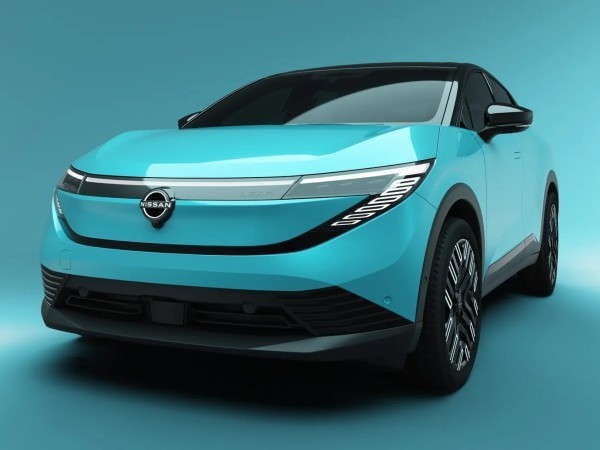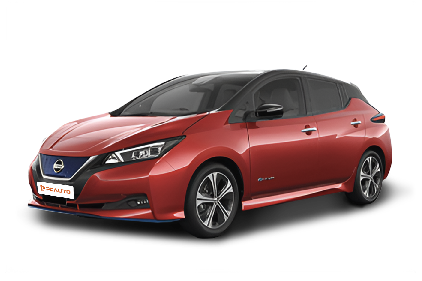Q
How long to charge a Nissan Leaf 2023?
The charging time of the 2023 Nissan Leaf depends on the type of charging equipment used and the battery capacity. The common Leaf version in Malaysia is equipped with a 40kWh battery. When using a standard 7kW home charging pile, it takes about 7.5 hours to fully charge from 0%, which is suitable for overnight charging. If using a 50kW public fast - charging station, it can be charged to 80% within 60 minutes. While the 3 - pin plug emergency charging cable (1.8kW) included with the vehicle takes about 24 hours. Therefore, it is recommended that car owners plan their charging methods according to their daily schedules.
It's worth noting that the Leaf supports the CHAdeMO fast - charging protocol, which is compatible with the mainstream charging network in Malaysia. However, the actual charging speed may be affected by the ambient temperature. In hot climates, the battery management system will moderately reduce the power to protect the battery. It is recommended to park the vehicle in a shaded area for charging to achieve the best efficiency.
For Malaysian consumers considering buying an electric vehicle, they also need to understand the distribution of local charging piles. For example, more fast - charging stations have been deployed in major cities such as Kuala Lumpur and Penang, while suburban areas may rely on home charging. At the same time, they can pay attention to the government's subsidy policies for electric vehicle infrastructure. These factors will all affect the daily car - using experience.
Special Disclaimer: This content is published by users and does not represent the views or position of PCauto.
Related Q&A
Q
Is a 2023 Nissan LEAF a hybrid?
The 2023 Nissan LEAF isn't a hybrid model. Instead, it's a battery electric vehicle (BEV) that runs entirely on battery power to drive the motor, without the need for a fuel engine. This car is equipped with battery packs in two capacities: 40 kWh or 62 kWh. Depending on the version, its range can reach from 270 km to 385 km (WLTP standard), making it suitable for city commuting or short - distance trips in Malaysia.
Compared with hybrid vehicles, pure electric cars enjoy government tax incentives in Malaysia, such as exemptions on import duties and sales taxes. Moreover, they have lower maintenance costs as traditional maintenance items like oil changes are no longer needed.
It's worth noting that the charging infrastructure in Malaysia is gradually improving. Public charging stations have been added in major cities. However, for long - distance trips, it's still necessary to plan charging stops in advance.
If you're considering a hybrid model, locally assembled models like the Toyota Corolla Cross Hybrid or the Honda City RS e:HEV might be more suitable for users with higher range requirements. They can automatically switch between fuel and electric modes without the need for external charging.
Q
What is the battery range of the Nissan Leaf 2023?
The 2023 Nissan Leaf is available in two battery capacity versions in the Malaysian market. The standard version is equipped with a 40 kWh battery pack, offering a range of approximately 270 kilometers (NEDC standard). The high - end version uses a 62 kWh battery pack, which can achieve a range of up to 385 kilometers, suitable for daily commuting and short - to - medium - distance travel.
As one of the earlier electric vehicles introduced in Malaysia, the Leaf's air - cooled battery system performs stably in tropical climates. It supports 50 kW fast charging, which can charge the battery to 80% in 40 minutes. Home charging takes about 7.5 hours for the 40 kWh version.
It's worth noting that the actual range will be affected by factors such as air - conditioning usage, driving habits, and terrain. It is recommended to check the latest distribution of charging piles on the official website of Nissan Malaysia before purchasing a car. Other electric vehicles in the same class, such as the BYD Atto 3 or the Hyundai Kona Electric, also offer similar ranges. Consumers can compare the coverage of the charging network and after - sales policies.
The Malaysian government offers import tax exemptions and road tax incentives for electric vehicles. Models like the Leaf can save about 80% of road tax costs, and the long - term usage cost is lower than that of fuel - powered vehicles.
Q
How many km is the range of the Nissan LEAF 2023?
The 2023 Nissan LEAF comes with two powertrain and battery capacity configurations. The low-power version has a motor with a maximum power of 130 kilowatts and a peak torque of 345 Newton-meters. It's paired with a lithium battery pack with a capacity of 52.9 kilowatt-hours, and the range hasn't been announced yet. The high-power version features a motor with a maximum power of 160 kilowatts and a peak torque of 355 Newton-meters. It's mated to a lithium battery pack with a capacity of 75.1 kilowatt-hours. Under the US EPA test cycle, it has a maximum range of 303 miles, which is about 488 kilometers. The top speed of both versions is 160 kilometers per hour. They also support the 150-kilowatt DC fast charging mode, and it takes 35 minutes to charge from 10% to 80% of the battery. Moreover, it has the VTOL mobile power station function. The range can be affected by various factors such as driving style, road conditions, vehicle load, and ambient temperature, so the actual range may vary in real use.
Q
What is the recall on the 2023 Leaf?
The 2023 Nissan Leaf was recalled globally due to a software issue. The problem mainly lies in the possible malfunction of the vehicle's on-board charging system control program, which may cause abnormal interruptions during the charging process. In extreme cases, it may affect the stability of the battery management system. This recall can be resolved by upgrading the software. If there are affected vehicles in the Malaysian market, Nissan will notify the owners through authorized dealers for free treatment.
For electric vehicle owners in Malaysia, it's very important to regularly check the vehicle recall information. You can check the VIN code on the MyTukar or JPJ website to confirm if your vehicle is within the recall scope. As electric vehicles are based on emerging technologies, software updates and system optimizations are normal. Similar recalls are routine measures taken by manufacturers to be responsible for their products and do not affect the long - term reliability of the vehicles.
It is recommended that Leaf owners keep in touch with the local Nissan service center to stay informed of the latest service announcements. At the same time, follow the official charging recommendations to extend the battery life. In Malaysia's hot climate, try to choose shaded areas for charging to avoid performance degradation caused by high battery temperatures.
Q
What is the top speed of the 2023 Nissan LEAF?
As a pure electric vehicle, the 2023 Nissan LEAF has a top speed of approximately 144 km/h (90 mph). This performance is more than enough to meet the needs of urban commuting and highway driving in Malaysia. The electric motor equipped in the LEAF provides instant torque output, enabling it to start and accelerate briskly. However, as an eco - friendly and economical electric vehicle, its design focuses more on range efficiency rather than ultimate speed. Malaysian users should note that the battery performance of electric vehicles may be affected by temperature in hot climates. It is recommended to carry out regular maintenance to keep the vehicle in optimal condition.
The Nissan LEAF supports the CHAdeMO fast - charging protocol. It can be charged to 80% of its battery capacity in about 40 minutes at local partner charging stations. With a range of approximately 270 km (WLTP standard), it is suitable for daily use. It's worth mentioning that the Malaysian government offers preferential policies such as exemption from import duties for electric vehicles. Before making a purchase, you can consult the dealer to learn about the latest subsidy details.
If you're looking for higher performance, you can pay attention to the Nissan LEAF e+ version, which has an increased battery capacity and power output. However, you need to weigh the price against your range requirements.
Q
Is the 2023 Nissan Leaf a safe car?
The 2023 Nissan Leaf performs well in terms of safety. It is equipped with a number of active and passive safety technologies, including intelligent emergency braking, lane-keeping assist, blind-spot monitoring, and rear cross-traffic alert systems. These features help reduce the chances of accidents. Meanwhile, the car has received a five-star rating in the European NCAP safety test, demonstrating its reliability in collision protection. For Malaysian consumers, the Leaf's safety configuration is relatively comprehensive among electric vehicles in the same class, especially providing effective assistance in common unexpected situations during city driving. It's worth mentioning that the battery safety of electric vehicles is also an important consideration. The Leaf uses a lithium-ion battery pack that has undergone rigorous testing and is equipped with a battery management system to ensure stability. If you're considering buying an electric vehicle in Malaysia, apart from safety, you can also pay attention to the convenience of local charging facilities and the government's tax incentive policies for electric vehicles, as these factors will all affect your daily driving experience. Overall, the 2023 Leaf is an electric vehicle option with satisfactory safety performance and suitable for urban commuting.
Q
How long will the 2023 Nissan Leaf last?
As a pure electric vehicle, the 2023 Nissan Leaf, under normal use and regular maintenance, usually has a service life of over 10 years or can cover a mileage of more than 200,000 kilometers. Its specific performance depends on the battery's health condition, driving habits, and the climate in Malaysia. The hot and humid environment may have a certain impact on the battery life, but the lithium - ion battery pack used in the Leaf has undergone strict testing and has good weather resistance.
It's worth noting that the key points of maintaining an electric vehicle are different from those of a traditional fuel - powered vehicle. Special attention should be paid to the battery cooling system, charging habits, and software updates. It is recommended to avoid frequent use of fast charging to extend the battery life. Meanwhile, Nissan provides an 8 - year or 160,000 - kilometer battery warranty service for the Leaf, offering additional protection for the owners.
In the Malaysian market, the electric vehicle charging infrastructure is gradually being improved. The driving range of the Leaf (about 240 - 360 kilometers, depending on the version) can basically meet the daily commuting needs. If it is mainly used for city driving and properly maintained, the long - term value of this vehicle is worth expecting.
Q
Where is the 2023 Nissan Leaf made?
The 2023 Nissan Leaf is mainly produced at the Nissan plant in Tochigi Prefecture, Japan. This plant is well-known for manufacturing electric vehicles and models with advanced technologies, and it serves as the core base for the global supply of the Leaf. For the Malaysian market, the Leaf is usually introduced through imports. Therefore, the vehicle nameplates that local consumers purchase will indicate "Made in Japan".
It's worth mentioning that as an iconic pure - electric model under Nissan, the Leaf is equipped with several proven technologies, such as the e-Pedal single-pedal driving mode and the ProPILOT intelligent driving assistance system. These features are particularly useful for urban commuting. When Malaysian consumers are making a purchase, they should note that due to the characteristics of the tropical climate, it is recommended to regularly check the battery cooling system to ensure optimal performance. At the same time, they can inquire about the coverage of the charging pile network through the official channels of Nissan Malaysia. Currently, the relevant infrastructure in major cities across the country has been gradually improved.
In addition, since the Leaf is a fully imported vehicle, its selling price will be affected by exchange rates and tariffs. However, it comes with a 5-year or 100,000-kilometer warranty service in line with Nissan's global unified standard, and the battery pack is provided with an 8-year or 160,000-kilometer warranty, offering long-term protection for car owners.
Q
How much is a 2023 Nissan LEAF worth?
Without insurance, the toll for the 2023 Nissan LEAF is RM188,888. This car is a traditional five - door, front - wheel - drive hatchback with a torque of 150 PS and 320 Nm, which is an improvement compared to previous models. The acceleration time from 0 to 100 km/h has been shortened to 7.9 seconds. It is equipped with a larger 40 - kWh lithium - ion battery. Under the more stringent WLTP cycle, the driving range is between 195 km and 270 km. Each vehicle comes with a 6.6 - kW wall - mounted charger that can fully charge the battery in 7 hours. The CHAdeMO port supports 50 - kW DC fast charging, and the charging can be completed in less than an hour. In addition, new features such as automatic emergency braking and the e - Pedal function for one - pedal driving have been added, which also support its value to a certain extent.
Q
Is the 2023 LEAF reliable?
The 2023 Nissan LEAF, as a pure - electric vehicle, performs quite stably in terms of reliability. Its electric powertrain has been market-tested over the years, with a relatively high level of technological maturity. In particular, there have been improvements in the optimization of the battery management system, which reduces the common battery degradation problems of early electric vehicles. It is suitable for urban commuting needs in Malaysia.
The standard - equipped active safety technologies of the LEAF, such as automatic emergency braking and lane-keeping assist, also enhance the safety of daily driving. Moreover, the local after-sales network has a wide coverage, making maintenance relatively convenient.
It's worth noting that the hot climate in Malaysia has a relatively small impact on the battery life of electric vehicles. However, it is recommended to regularly check the cooling system to ensure optimal performance. If you're considering an electric vehicle, you also need to pay attention to the distribution of charging facilities in Malaysia. Currently, charging piles are gradually becoming popular in major cities, but long-distance travel still requires prior planning.
Among vehicles in the same class, the cost - effectiveness advantage of the LEAF lies in its long-term experience in electric vehicle development. However, the actual driving range will be affected by the use of air - conditioning and driving habits. It is recommended to focus on the actual driving range when the battery is fully charged during a test drive.
Popular Cars
Model Year
Car Compare
Car Photo
Latest Q&A
Q
How much did a new 2018 beetle cost?
The 2018 Volkswagen Beetle had a starting price range of approximately RM120,000 to RM180,000, depending on the trim and options. The entry-level 1.2 TSI Design model was the most affordable, while the top-spec 2.0 TSI R-Line version approached RM180,000—though final pricing could vary with optional extras and dealer promotions.
As a timeless classic, the 2018 Beetle kept its retro charm but packed modern tech like a touchscreen infotainment system and active safety features. Under the hood, buyers could choose between the fuel-efficient 1.2T or the more spirited 2.0T engine.
Fair warning: Volkswagen discontinued the Beetle in 2019, so you’ll only find it on the used market now. That said, its iconic design and nostalgic appeal still make it a hit among collectors. If you’re eyeing a pre-owned model, always check the vehicle history and maintenance records to snag a solid deal.
Q
What engine does a 2018 VW Beetle have?
The 2018 Volkswagen Beetle offered two gasoline engine options across different markets. The primary powerplant was a 1.2-liter TSI turbocharged inline-four, delivering 105 horsepower and 175 Nm of torque, paired with a 7-speed DSG dual-clutch transmission. This compact forced-induction engine struck a balance between urban fuel efficiency and strong low-end torque.
Higher-spec variants featured an optional 1.4-liter TSI turbocharged unit, bumping output to 150 horsepower. Both engines adopted direct fuel injection and belonged to VW’s widely used EA211 modular family, featuring modern tech like lightweight aluminum blocks.
Though retaining its iconic silhouette, this generation Beetle actually shared its underpinnings with the Golf, inheriting the brand’s proven front-wheel-drive architecture. This platform commonality also translated to easier maintenance, as local dealerships were well-versed in servicing these powertrains thanks to extensive parts sharing across VW’s lineup.
Q
What are the different models of the 2018 VW Beetle?
The 2018 Volkswagen Beetle comes in three main trims: Classic, Trendline, and Sport. All models are powered by a 1.2-liter TSI turbocharged engine delivering 105 horsepower, paired with a 7-speed DSG dual-clutch transmission—perfect for city driving with its nimble handling and solid fuel efficiency.
The entry-level Classic trim rolls on 16-inch wheels and features a basic multimedia system. Stepping up to the Trendline adds 17-inch wheels, fog lights, and chrome accents. The Sport trim leans into its name with 18-inch wheels, a sport-tuned suspension, and unique interior color options.
This generation keeps the Beetle’s iconic retro curves but modernizes them with touches like LED daytime running lights. Inside, you’ll find color-matched dash panels, and with 310 liters of trunk space, it’s more practical than most small cars in its class.
Since the Beetline was discontinued in 2019, the 2018 model stands as the last new generation, making it a rising collector’s item—especially the convertible, which holds strong appeal in the used market. For maintenance, stick to routine service every 15,000 km or 12 months, and regular 95-octane fuel is all it needs.
Q
Does the 2018 Beetle have Apple CarPlay?
The 2018 Volkswagen Beetle did come equipped with Apple CarPlay, integrated into its Composition Media infotainment system. This allowed iPhone users to seamlessly connect for navigation, music, and other apps. The system also supported Android Auto, catering to different smartphone users with its intuitive and responsive interface—definitely a plus for convenience on the road.
That said, some early-production 2018 models might require a software update to activate the feature, so it’s worth checking with an official dealer to confirm your car’s specs or available upgrades. Also, wireless Apple CarPlay wasn’t standard across all trims; it depended on the factory-installed options.
For fans of classic styling who still want modern tech, the Beetle struck a nice balance between retro charm and everyday usability. Competitors like the Mini Cooper offered similar connectivity, but let’s be honest—the Beetle’s iconic design was always its standout feature.
Q
What is the fuel economy of the 2018 Beetle?
The 2018 Volkswagen Beetle's fuel efficiency varies by powertrain. The 1.2L TSI turbocharged version delivers a combined fuel consumption of around 5.5L/100km, while the 1.4L TSI model is slightly thirstier at approximately 6.0L/100km – both perform best with 95-octane petrol.
You'll likely see higher consumption in city driving, but it cruises efficiently on highways thanks to its classic aerodynamic design. For better mileage, stick to routine maintenance like cleaning the air filter and keeping tyres properly inflated. These small habits can help squeeze out extra kilometres per litre.
Though discontinued, the 2018 Beetle remains popular in the used car market – its iconic styling and decent fuel economy make it a practical daily driver. Just remember real-world figures depend heavily on driving style and road conditions, so check owner forums for real-life feedback.
View MoreRelated News

2026 Nissan Leaf wins Wards Top 10 Powertrains Award
MichaelSep 25, 2025

2026 Nissan Leaf announced the price in the US, still one of the most affordable EVs in the region
WilliamAug 21, 2025

Mitsubishi to Launch Electric Vehicle Based on Nissan Leaf in Second Half of 2026
LienMay 8, 2025

Nissan Leaf Reborn: 600km-Range SUV Revolution
AshleyMar 27, 2025

It used to be as powerful as Hilux, but now it has to avoid competing with Hilux.
Kevin WongNov 18, 2025
View More


















Pros
Cons